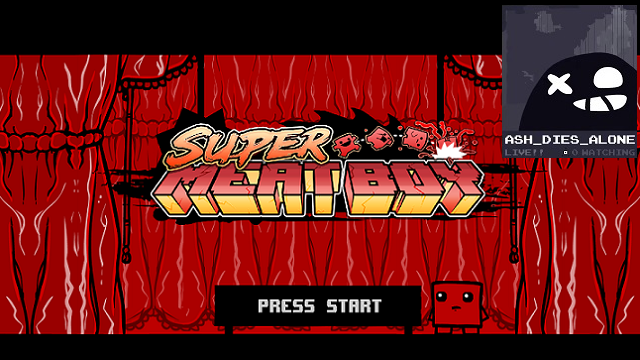Edmund McMillen is a legend among indie developers. To this point, he has released two critically acclaimed games in Super Meat Boy and The Binding of Isaac, both of which could be given a strong argument for consideration as one of the best indie games of all time. With SMB’s impeccable, fluid platforming and TBoI being considered by many to be the definitive roguelike, it’s hard to argue against McMillen’s skill at game design.
Last week he released his newest full game, The End Is Nigh. It’s a challenging platformer, like Super Meat Boy, but with a greater emphasis on exploration. It earned a 9 in our review, so we clearly consider it to be on par with McMillen’s quality standards. But how does it compare to his other games?
The Binding of Isaac
I’m going to get this out of the way immediately– The Binding of Isaac: Rebirth is one of my favorite games of all time. The sheer strategic depth of its many mechanics, paired with addictive twin-stick bullet hell inspired gameplay, and over 500 items with diverse effects that can stack on top of one another to create insane combinations give it more replay value than any other game I’ve ever played.
But, being a completely different genre largely makes it unfair to compare it to The End Is Nigh. As a platformer, it’s going for something completely different and while executing it admirably. Its replay value is found not in hundreds of hours of procedurally generated content, but in brutally difficult levels that will take you hours to get past.
There are many who relish that challenge and will love trying to 100% this game, but Isaac’s model is my preference. However, if comparing TEIN to SMB is like comparing apples to oranges, then this is like comparing apples to video games. They’re both good in their own ways, but they’re also significantly different.
Super Meat Boy
Super Meat Boy, meanwhile, is a far more exact comparison. It and The End Is Nigh operate on similar models of extremely tough platforming. The differences are therefore more subtle, but they still have quite an impact.
The most obvious difference is the emphasis TEIN places on exploration. While SMB’s levels are mostly self-contained, TEIN wants you to think of them all as connected, letting you traverse from one to the next simply by walking off screen. Some later levels even have you backtrack to progress. This structure gives TEIN something SMB didn’t really have, which is well-hidden secrets. Finding a concealed path off of a screen can take you to a hidden area with a whole new challenge and a greater reward at the end. Exploration can be extremely enjoyable in a game — we humans love it — and TEIN puts it to great effect. Sure, it’s not a full-blown Metroidvania by any means, but the sprinkling of exploration gives the world a certain cohesive interconnectedness.
Other differences are more granular but no less significant to the way the game plays overall. The absence of wall-jumping represents a great example of this. While in SMB you could slide on and jump off of walls to your heart’s content; however, in TEIN you’re restricted to hanging off of corners and tiny ledges.
In SMB, each level was self-contained, so wall-jumping made sense. It let each level be a death-filled playground for you to bounce around in, giving you freedom to explore it however you like. With the interconnected world of TEIN, however, unrestricted wall-jumping could lead to players finding secrets far too easily and in ways that were unintended.
Restricting movement via the ledge mechanic allows the game to reward players for careful observation, and even allows ledges to be placed in tantalizingly distant locations that promise a secret if you can only figure out how to reach them. Importantly, ledges are not inherently better than wall-jumping. Rather, both mechanics are the better solutions for their respective games.

Wall-jumping would also make this screen way too easy.
One thing SMB does have, which TEIN lacks, is boss fights. The fact that TEIN has no showstopper-style showdowns is by no means a deal-breaker, but it is noteworthy. The reasoning for their omission is slightly more abstract than the already mentioned differences. Essentially, SMB‘s tone is a lot lighter than that of TEIN. In TEIN, Ash is described as “one of few ‘things’ that have ‘survived’ the ‘end of the world’.” There’s no Bandage Girl to save here, or even a villainous Dr. Fetus trying to thwart you. Even the “friend” you’re trying to build ends up being a desiccated corpse. The game does have enemies, but there’s no real way to kill them and they feel more like part of the level than intelligent entities. Having some massive foe to defeat at the end of each world would disrupt the feeling of isolation the game seeks to make you feel by playing as Ash.
Ultimately, The Binding of Isaac, Super Meat Boy, and The End Is Nigh are all fantastic games. Isaac is my favorite of the three, with The End Is Nigh just slightly edging out SMB. There will likely be many who prefer SMB, and that’s fine for those who prefer a pure platforming experience without the exploration elements thrown in. But ranking them does a disservice since all three titles are of such high quality. However you put it, the verdict is in, McMillen’s latest game is absolutely one that earns its place among his classics.
What’s your favorite game by Edmund McMillen? What did you think of The End Is Nigh? Let us know in the comments!







Published: Jul 19, 2017 05:53 pm